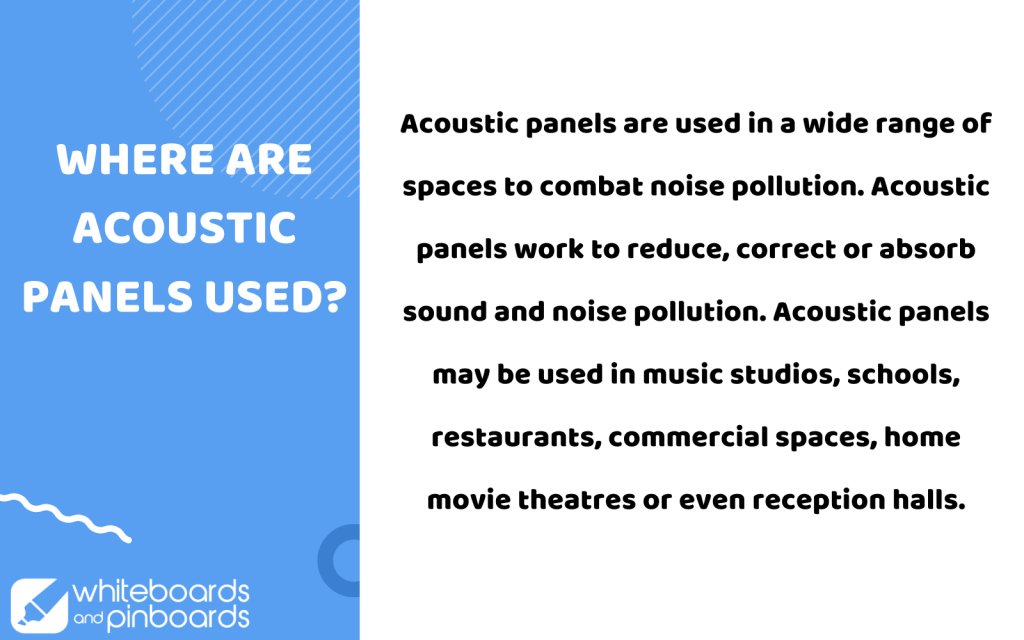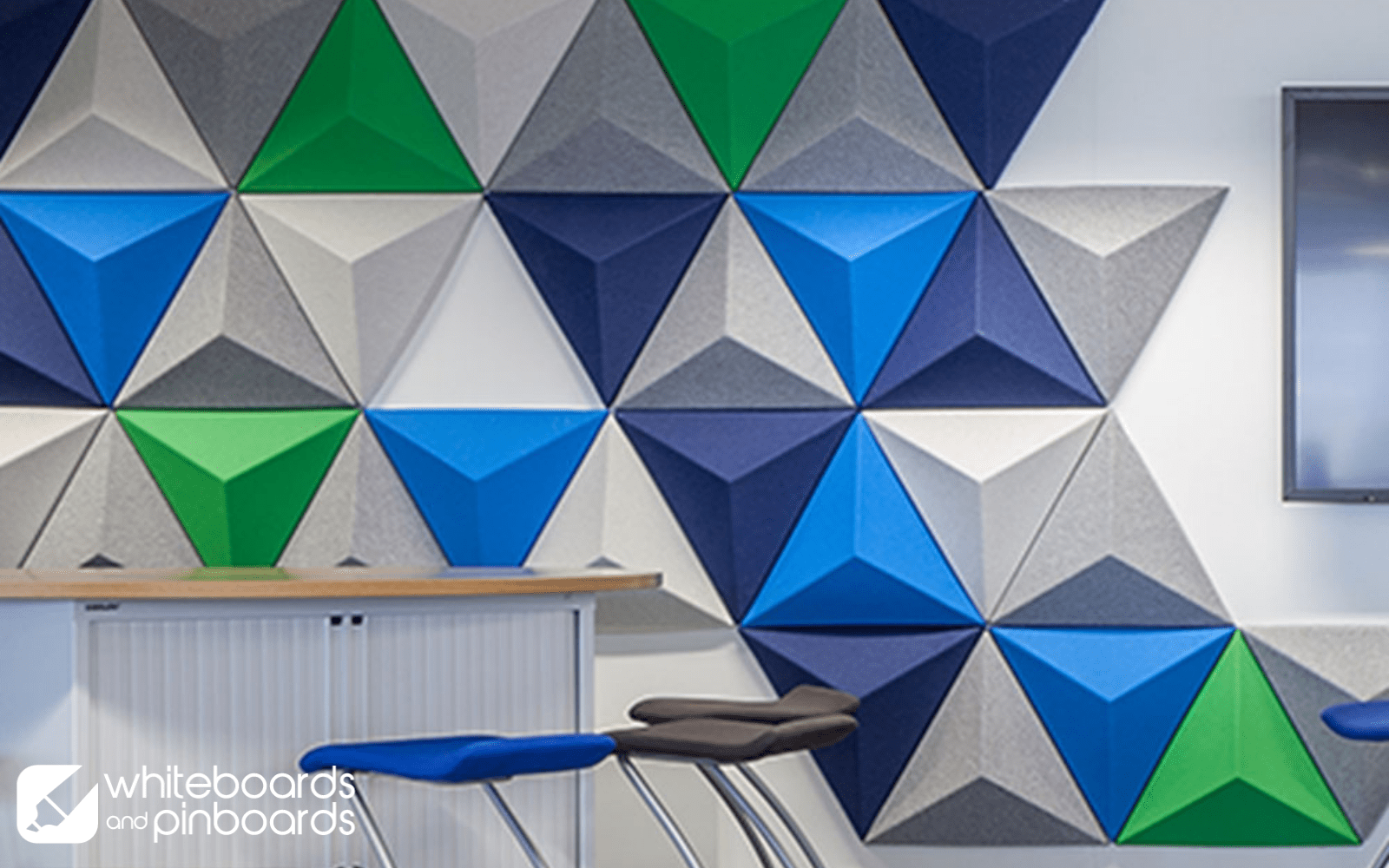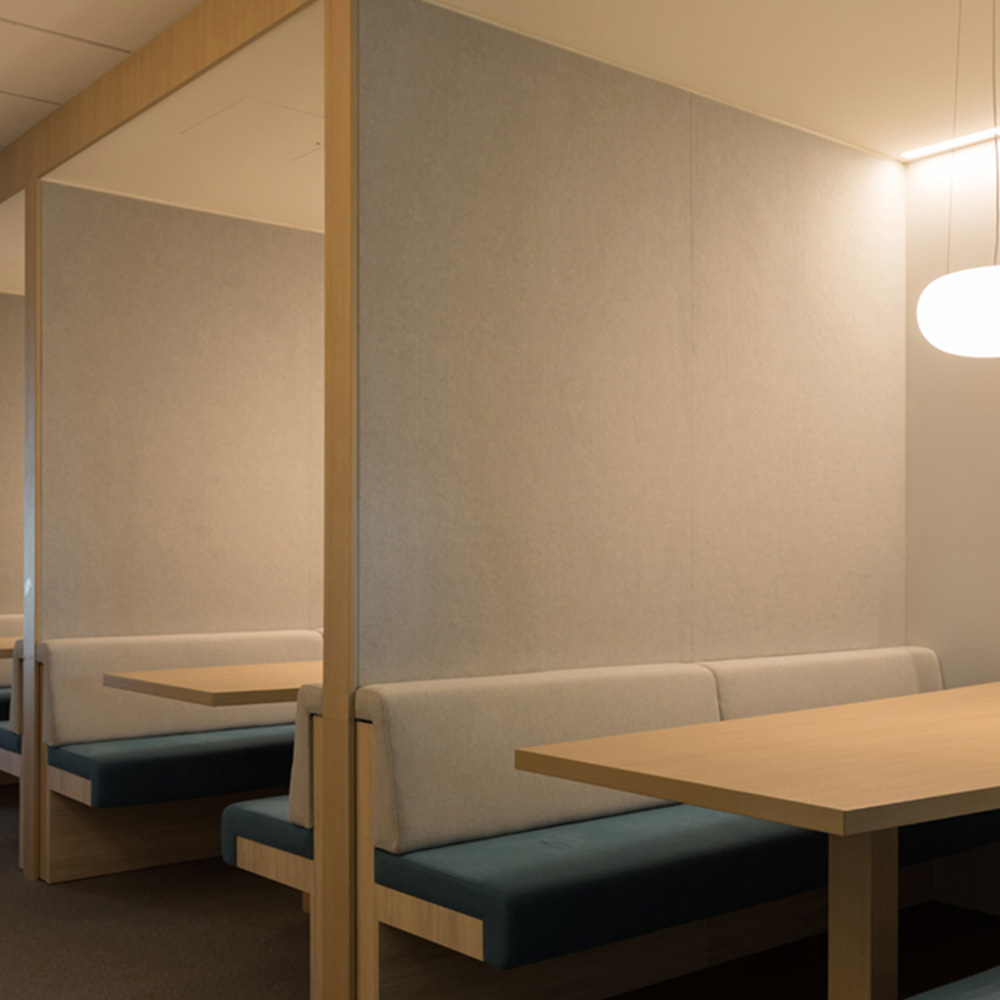If you’ve recently invested in some acoustic materials, working out where to place acoustic panels in rooms can be quite difficult and daunting. You have probably just gone through the entire process of finding out which acoustic materials you require, and now you need to place and install the panels.
If you’re considering where to place acoustic panels in rooms, you might be tempted to take the quick approach and place them in the easiest and most convenient spots for installation. This is the most common mistake people make after purchasing acoustic panels and can have a major impact on the effectiveness of the sound-absorbing panels.
The Importance of Acoustic Panel Placement
So, instead of wasting time and money, it’s important to think strategically about where to place acoustics panels. If done correctly, acoustic panels can transform a commercial, working or learning space. As a starting point, consider the room and your requirements. A home theatre is vastly different from an office space, so the acoustic panels you have and the importance of where you place them will vary dramatically.
In this article, Whiteboards & Pinboards will go through a few points you should consider when you’re considering where to place acoustic panels in rooms – from commercial spaces to learning facilities and everything in between, we’re your go-to acoustic experts at Whiteboards and Pinboards. Here are some things to think about when you’re trying to decipher where to place acoustic panels:
5 Tips for Where to Place Acoustic Panels in Rooms
1. Height of Acoustic Panels
Height is critical when it comes to where to place acoustic panels in rooms. If you’re trying to work out where to hang acoustic panels, you need to consider the heights at which the panels are placed. Sound waves move in a straight line until something interrupts their path; so placing your acoustic panels either too high or too low can reduce the effectiveness of the panels and result in poor sound quality in the room. Height placement of acoustic panels is very important, however, unless you have some prior knowledge about acoustics it’s easy to overlook this factor.
If you’re looking to place acoustic panels around the office, where people are sitting for the majority of the day, you want to place your panels at the height of four to five feet. Placement at this height will capture most of the sound generated in the room, as it is the average height of a person when sitting. However, a bar would benefit from having their acoustics panels higher as most of the sound generated is from people standing. These panels should be centred around the five to seven feet mark as this is a good average of standing heights.

2. The Spacing of Acoustic Panels
If you’re looking at where to place acoustic panels in rooms, you’re probably looking to soundproof a room that generates quite a bit of noise. Noise can come from various sources, travel in all different directions and bounce off different sources. If you want your acoustic panels to have the most sound-absorbing impact, you need to have them correctly spaced out.
Panels localised to one area will only be reached by a small number of sound waves until they bounce around enough to finally hit a panel. This placement will only be beneficial when the noise source is pointing directly at the acoustic panel (likely in a home theatre scenario). In a situation with multiple noise sources, like an office, a general rule is that there should be at least some acoustic panelling on one of two parallel walls. Ideally, there should be an even balance of your acoustic panel placement.
3. The Symmetry of Acoustic Panels
Closely related to spacing, you want your acoustic panels to have some symmetry. Like spacing, the symmetry of acoustic panels helps to spread the noise reverberation and absorption of acoustic panels; but is generally more to do with the aesthetics of a room. Unless the room is a recording studio, you will probably care about how it presents and how it functions, so symmetry is vital in creating both a functional and pleasing room. Thankfully, many of our acoustic panel brands are designed to offer both a practical and stylish setting.
4. Reflection Points
Reflection points have a significant impact on the acoustics of a room and should influence where to hang acoustic panels. Reflection points are the points where the sound is reflecting off and back into the room. In a space like an office with multiple sound sources, there will be a lot more reflection points than a home theatre that has minimal sound sources that are all directed at the listeners.
Like mentioned above, an office space will benefit from having acoustic panels spread out to reach as many reflection points as possible and stop sound reflecting back into the room. However, in say, a home theatre, you’d want to place your acoustic panels on the reflection points that will be localised to one or a few areas. This might mean positioning your panels directly next to each other with no gaps because you know precisely where your reflection points are, and they’re not going to change or move.

5. Room Size and Shape
The room size and shape can also influence where to put acoustic panels. Spacing for a standard rectangular room is pretty straight forward, and spacing of your panels can be symmetrical around the perimeter of the room. However, not all rooms are identical, and this impacts acoustics.
High ceilings, for example, can create significant problems for loud rooms, like office foyers, as they add another surface for sound to bounce off. These rooms can benefit from having acoustic panels placed on the ceiling. A longer room has a different problem; in this case, the sound has further to travel but requires a greater spread or surface area of panels to collect the sound as it travels down the room. Before you decide where to put acoustic panels, thoroughly consider the size and shape of the space you’re fitting out.
Whiteboards and Pinboards Acoustic Panels
When deciding where to place acoustic panels in rooms, there are a few points to consider before you go ahead and install them permanently. When used correctly, acoustic panels will reduce noise echo and provide a quieter space; used incorrectly, acoustic panels will not be as effective. When wondering where to put acoustic panels and where to hang acoustic panels, remember how height, spacing, symmetry, reflection points, size and shape of the room can influence the effectiveness of acoustic panel sound absorption.
Here at Whiteboards and Pinboards, we stock a large variety of acoustic foam and panels designed for commercial use in offices, schools and retail spaces. Shop our extensive range of acoustic options, such as 3D Acoustic Tiles, Acoustic Fabric Rolls, Acoustic Panels, Autex Acoustic Panels, Acoustic Ceiling Panels, Hanging Acoustic Panels, Autex Frontier and Woven Image Acoustic Panels products. You can also take advantage of our fast and reliable Australia wide shipping for all types of acoustic materials.













What do I use on my ceilings to dull the noise of footsteps from the floorboards above my apartment?
Hi Philip. I believe you would need to look into sound insulation material. Ultimately, any material added to the wall between you and sound will have some reducing effect, and so while acoustic panels can certainly help, they are designed with echo and reverberation in mind rather than out and out noise level reduction.